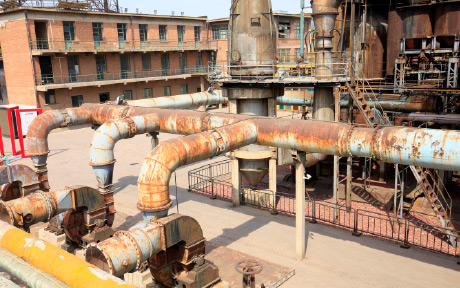Will New Steel Tariffs Protect U.S. Jobs?

President Trump announced a new tariff of 25 percent on steel imports and 10 percent on aluminum imports on March 8, 2018. One objective of these tariffs is to protect jobs in the U.S. steel industry. They were introduced under a rarely used 1962 Act, which allows the government to impose trade barriers for national security reasons. Although the tariffs were initially thought to apply to all trading partners, Canada and Mexico are currently exempt subject to NAFTA negotiations, and implementation of the tariffs for the European Union, Argentina, Australia, and Brazil has been paused. South Korea has received a permanent exemption from the steel tariffs and will instead by subject to a quota of 70 percent of its current average steel exports to the U.S. In this post, we consider how the steel tariffs could affect U.S. trade and employment. We focus on steel since the steel industry employs about three times as many workers as the aluminum industry, although qualitatively our conclusions apply to both. We argue that the new tariffs are likely to lead to a net loss in U.S. employment, at least in the short to medium run.
Are Banks Being Roiled by Oil?

Profits and employment in the oil and natural gas extraction industry have fallen significantly since 2014, reflecting a sustained decline in energy prices. In this post, we look at how these tremors are affecting banks that operate in energy industry–intensive regions of the United States. We find that banks in the “oil patch” have experienced a significant rise in delinquencies on commercial and industrial loans. So far though, there appears to be limited evidence of spillovers to other types of loans and no evidence of widespread bank losses or failures in these regions.
Lower Manhattan since 9/11: A Study in Resilience
The 9/11 terrorist attack on the World Trade Center left a deep scar on New York City and the nation, most particularly in terms of the human toll.
Restoring Economic Growth in Puerto Rico: Introduction to the Series
The difficult economic and financial issues facing the Commonwealth of Puerto Rico have remained very much in the news since our post on options for addressing its fiscal problems appeared last fall. That post was itself a follow-up on a series of analyses, starting with a 2012 report that detailed the economic challenges facing the Commonwealth. In 2014, we extended that analysis with an update where we focused more closely on the fiscal challenges facing the Island. As the problems deepened, we have continued to examine important related subjects ranging from positive revisions in employment data, to the understanding emigration, and to considering how the Commonwealth’s public debts stack up. In most of this work, we have focused on how policymakers could help to address the immediate issues facing the Island and its people. The U.S. Congress and the Obama Administration took action in June to provide a framework to help address Puerto Rico’s fiscal crisis. But much remains to be done to address these ongoing problems, which represent a significant impediment to economic growth in the short run. It also seems important to revisit the question of the prospects for reviving longer-run growth in the Commonwealth. These concerns were underscored by projections published by the International Monetary Fund (IMF) in the April edition of the World Economic Outlook that forecast Puerto Rico’s real GDP and population to decline through 2021.
Upstate New York Job Growth: The Bad News Is that the Good News Was Wrong
Just Released: An Update on Regional Economic Conditions Provided at Our Economic Press Briefing
Jaison R. Abel, Jason Bram, Richard Deitz, and James Orr Today’s Economic Press Briefing at the New York Fed presented our economic outlook for New York, Northern New Jersey, and Puerto Rico. We showed that many parts of the region have bounced back quite well from the Great Recession and are growing at a solid […]
Crisis Chronicles–The California Gold Rush and the Gold Standard
On the crisp morning of January 24, 1848, James Marshall, a carpenter in the employ of John Sutter, traveled up the American River to inspect a lumber mill that Sutter had ordered constructed close to timber sources.
Just Released: April Empire State Manufacturing Survey Indicates Sluggish Conditions
The April 2015 Empire State Manufacturing Survey, released today, points to continued weakness in New York’s manufacturing sector. The survey’s headline general business conditions index turned slightly negative for the first time since December, falling 8 points to -1.2 in a sign that the growth in manufacturing had paused. The new orders index—a bellwether of demand for manufactured goods—was also negative, pointing to a modest decline in orders for a second consecutive month. Employment growth slowed, too. The Empire Survey has been signaling sluggish growth since October of last year after fairly strong readings from May through September.
Just Released: Benchmark Revisions Paint a Brighter Picture of (Most of) the Regional Economy
Every March, the Bureau of Labor Statistics releases benchmark revisions of state and local payroll employment for the past year.
















 RSS Feed
RSS Feed Follow Liberty Street Economics
Follow Liberty Street Economics